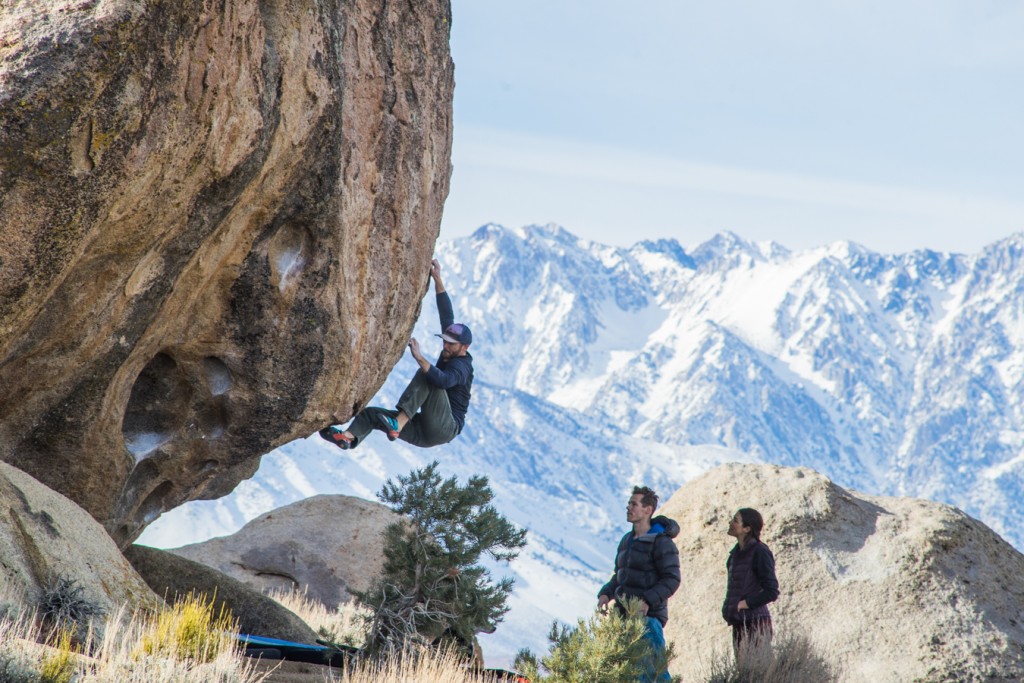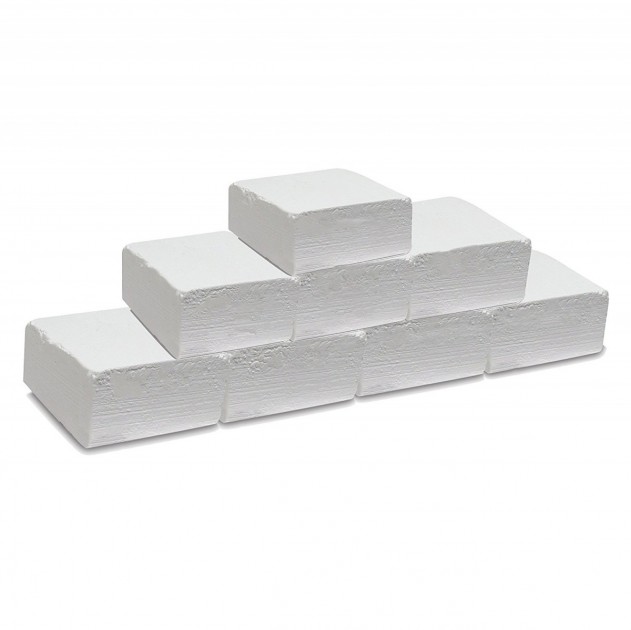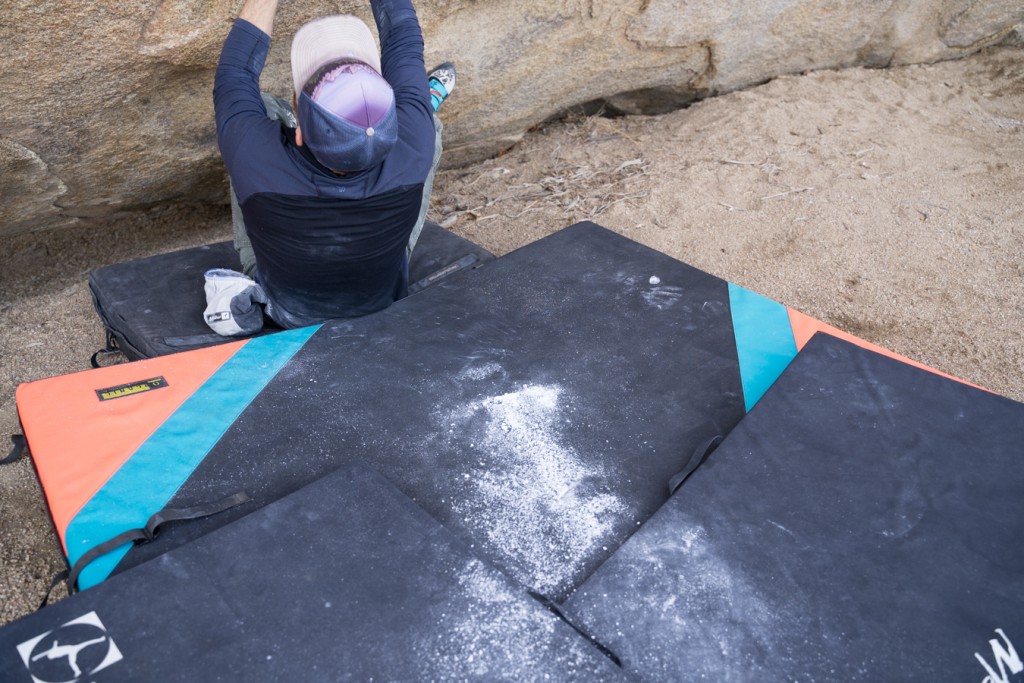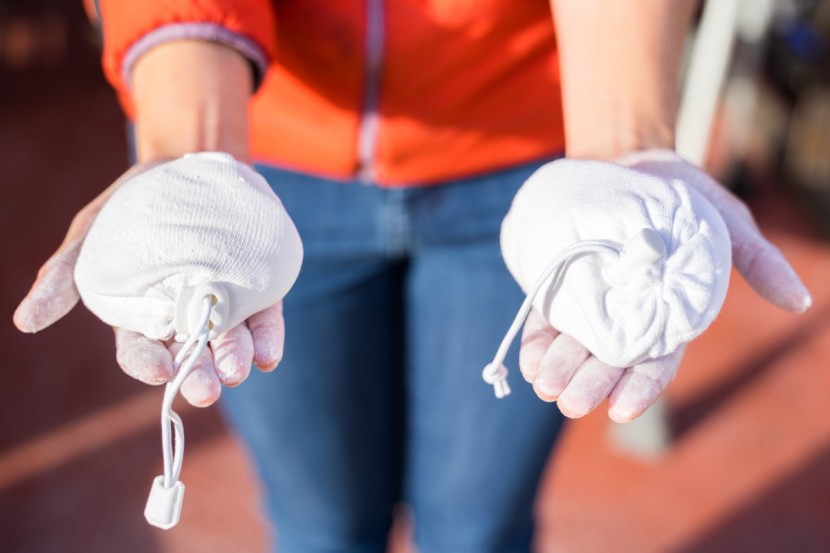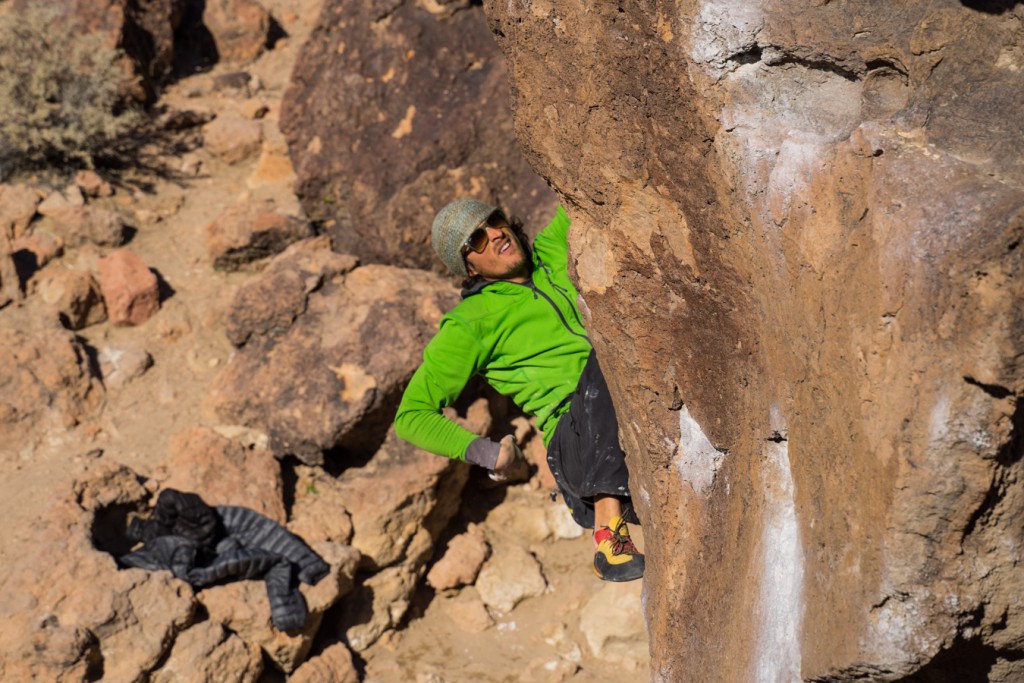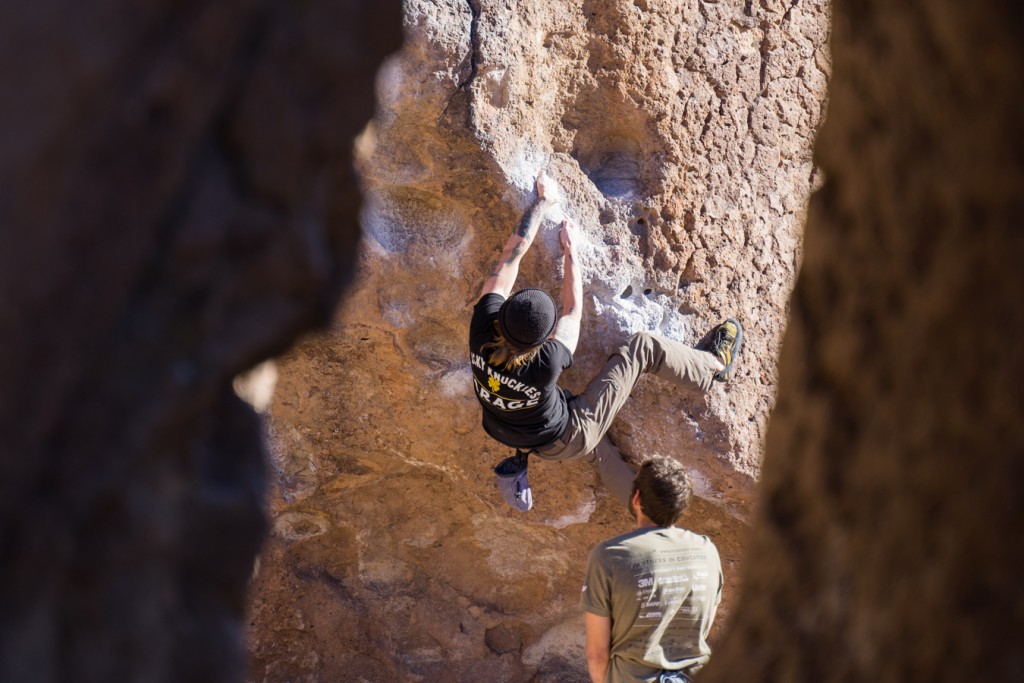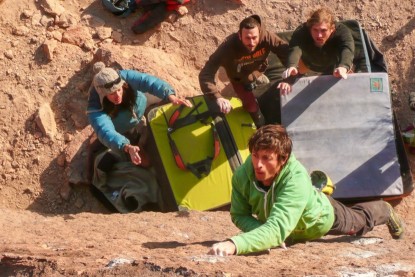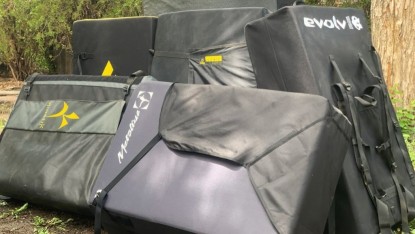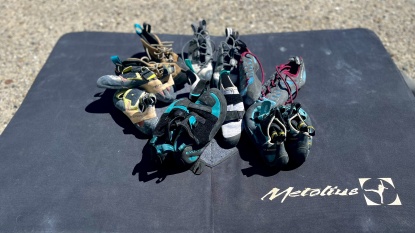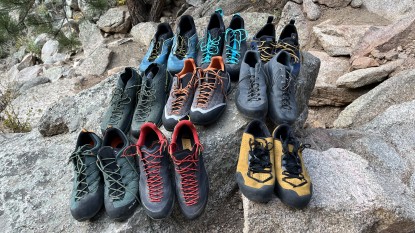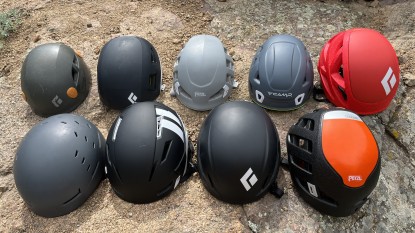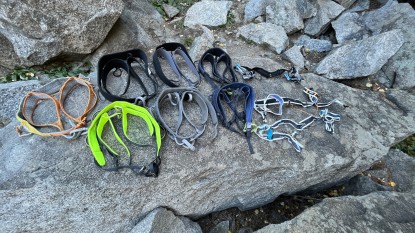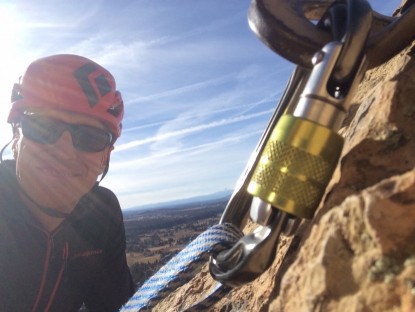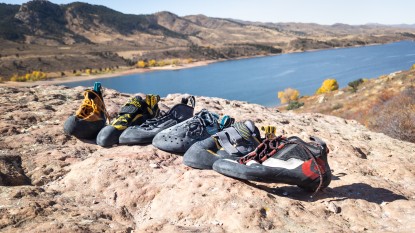Climbing chalk used to be only available from a few manufacturers described innocuously as magnesium carbonate, and we accepted whatever was the cheapest, or more often whatever was on the shelf at the climbing shop. Now we have choices — loads of them, some fortified with additional drying agents and even funky scents. In this article, we outline the types of chalk, their various forms, and the most appropriate applications for each. You'll be more informed when confronted with a lineup of blocks, balls, and creams. Take what you lean here and head over to our full chalk review to see which products our testers deemed the best.
Long before climbing gyms, crash pads, and Instagram, John Gill was a college student at Georgia Tech, and in his free time, he pioneered the sport we now call bouldering. Garnering inspiration from his gymnastics class, he started rubbing block chalk on his fingers before scaling the buildings around his college campus. He went on to develop difficult and classic lines all over the U.S. while planting the seeds of what would become climbing's most accessible and popular sub-sport. Now considered essential equipment for all climbing, we all run around the gyms and boulder fields with bags of chalk hanging from our waists (or we tote it around in expensive, handcrafted canvas buckets).
Does chalk matter? Well, it depends on who you ask. The marketing gurus behind the over 20 companies slinging chalk would reply with a resounding “yes,” claiming the purer the magnesium carbonate, the more effective the chalk. When climbing at their very limit, many top athletes will swear that a particular brand, along with an obsessive, meticulous skin care ritual (no dishwashing, wearing rubber gloves in the shower) is the only way to send the world's most difficult climbs. For the rest of us that don't climb well enough to get away with not doing the dishes, variables like price, texture, and ease of use inform our choices.
Types of Chalk
Climbing chalk is available in a handful of different varieties, and you'll want to make your choices based on where you're climbing. Many gyms require you to use a chalk ball instead of loose chalk in an attempt to reduce particulate matter in the air. For humid, tropical venues, a base layer of liquid chalk might be what you need for your extra sweaty mitts. There are even chalks colored to match different rock types so that cliffs won't become covered in unsightly white blotches and tick marks. Colored chalks haven't taken off yet, perhaps because chalked up holds and tick marks make it way easier to onsight hard routes.
Block Chalk
For many years, block gymnast's chalk was the only chalk widely available, mainly sold by the Frank Endo Company. We bought it in boxes of 12 2oz blocks. Each block was individually wrapped in paper, and when you unwrapped them, hunks would break off and fall into the trunk of the car or the floor of the gym, to be later ground into a fine dust and get all over your clothes. This added to the filth and allure of the dirtbag climber, but as a real pain for anyone trying to look respectable and hold down a job. Not much has changed about chalk blocks in the last thirty years, though in the case of the Endo chalk, it now comes in plastic packaging, making it slightly easier to unwrap without breaking, but it's still a fun challenge.
Today, several major climbing companies sell block chalk, including Black Diamond and Metolius. Many climbers still prefer block chalk because you can vary how fine or chunky you want it just by putting a block in your chalk bag and pounding on it. You can also keep some larger chunks on hand for making tick marks (always brush them off when you're finished) or to carve into small figurines. The mess is the major downside of block chalk, though you can negate this by unwrapping the chalk and filling your chalk bag over a big ziplock that you can then use to store the leftover chalk chunks. Climbing gym staff don't appreciate folks unwrapping chalk blocks in the middle of the climbing gym, and crushing the chalk block into small pieces to fill a chalk ball can also be a messy, involved process.
Loose Chalk
Loose climbing chalk is the most ubiquitous form of climbing chalk on the market today. Usually sold in resealable bags or plastic buckets, loose chalk can be very fine or chunky, and until recently, the size of the chalk chunks seemed to vary wildly from bag to bag. Friction Labs, a company that only sells climbing chalk, offers three different varieties of texture. Bam Bam (Super Chunky) is for folks who like large chunks that take some time to slowly break down into smaller pieces in their chalk bags. Gorilla Grip (chunky) has better coverage because it has some fine powder mixed with smaller chunks for climbers who still want some crunch in their bags. Finally, Unicorn Dust (fine) seems to stick better to your hands, but you'll go through it faster, and more of it will end up in the air. We've seen entire bags full of fine chalk emptied in alpine winds.
Generally, the chunkier the chalk, the longer it lasts. The tradeoff is that finer chalk covers your hands better. For boulderers, coverage is important, since on hard problems they might not have an opportunity to rechalk their hands once they leave the ground. Our route climbing testers prefer some chunk in their chalk bags, giving them something to fiddle with while they rest, shake out, and chalk up again and again (and again).
Loose chalk can be messy and easily spills out your chalk bag, especially if your favorite style of climbing involves scooting around on your butt while you try a scrunchy sit start a few dozen times. Not all packaging is created equal, and some brands are easier to get from the package to your chalk bag, but keeping a plastic scooper in the chalk container makes life easier and cleaner when it's time to fill your chalk bag or refillable chalk ball.
Chalk Balls
Chalk balls offer a relatively mess-free solution. A chalk ball (or chalk sock, as Metolius deems it) is a stretchy, chalk permeable sack that distributes chalk on your hands when you squeeze it. It's meant to reside inside your chalk bag just like loose chalk, but should it fall out, no mess! Just a small amount of dust. Squeezing a chalk ball will not provide the same friction producing (?), confidence inspiring (!) coverage as loose chalk, but many gyms require them since they keep chalk off the ground and somewhat out of the air. They're also great for small children who are prone to spilling or eating chalk. The chalk balls we tested are refillable and have a drawstring at the top to seal in the chalk. You can even make your own by taking an old sock, filling it with chalk, and tying off the top, though you might get some disproving looks on date night at the climbing gym, and all the chalk balls we reviewed performed better than our homemade experiments.
Liquid Chalk
For the ultimate in hand coverage and minimal air pollution, there's liquid chalk. It's fun, novel, and is a boon to the clammy grease monkeys who suffer from the dreaded pizza hands. Liquid chalk, or chalk cream, is a mixture of alcohol and magnesium carbonate. After squeezing a teaspoon-sized amount onto your hands, you're left with a white glob that has the consistency of frosting. Don't eat it. Upon rubbing it in, you'll be left with a clear, grainy film on your hands wondering where the chalk went. After about 30 seconds the alcohol evaporates leaving a thin coating of chalk. Liquid chalk is very effective at getting into every nook, cranny, and crack in your hands. It's so effective that some people feel it makes their skin too dry and more prone to splitting and cracking, and you shouldn't use it if you have cuts and crack in your hands or you have especially sensitive skin.
Fans of liquid climbing chalk use it in addition to loose chalk since the drying process means you can't use liquid chalk on the fly. When applied to clean, dry hands, it makes a nice base layer at the beginning of a bouldering session or before long redpoint attempt. You could keep a tube of the stuff in a backpack or haul bag on a multi-pitch if you deem it essential to your success, and Friction Labs sells it in pocket-sized single doses. You can also make your own fairly easily using a ratio of isopropanol and fine climbing chalk at a ratio of 1:2. There are a handful of DIY articles and Youtube tutorials out there if you're interested.
Colored Chalk
Colored chalk is slowly increasing in popularity, especially in sensitive areas where local, non-climbing folks understandably don't see a chalked up cliff as a thing of beauty. While colors are limited, they aren't as noticeable on the rock from far away. In our experience, most climbers either don't care about chalked holds, or they like them because it makes climbing easier, as you can see where the holds are, just like in the climbing gyms. If you decide to purchase colored chalk, make sure you match the color of the chalk to the color of the rock you'll be climbing as close as you can. If you climb a grey rock with sandstone colored chalk, it will look like you've smeared, uh, brown stuff all over the holds and your hands.
Skin Care
Climbing is tough on the skin, and raw fingertips, splitting, and cracking will end your trip to Squamish faster than a Canadian border agent can look up your criminal records. While chalk is a severe drying agent that helps us hang on longer (even if it's only in our minds), it can wreck your skin and drastically lengthen the time it takes to grow new skin. Every professional climber takes skin care very seriously, and so should you. We recommend washing your hands after climbing with a gentle, fragrance-free soap and bringing a skin care kit along with you on your next trip, especially if you're a boulderer. In your kit you should have:
A file or sanding block: This will allow you to file down any knicks in your skin before they catch on a sharp hold and become a gaping bloody flapper.Nail clippers: For trimming them claws. Also for clipping off flappers before they get even bigger
Your favorite salve: When you're finished climbing, salve often. This will keep your skin moist, but not too moist, preventing cracks, and helping your skin heal quicker.
Athletic tape: Great for taping fingers or hands when you're doing lots of crack climbing. Some call it cheating. Call us cheaters, since taping up keeps us climbing longer and having more fun without bleeding everywhere.
Dust
Plenty of folks are (and should) be concerned about the air quality in their climbing gyms. The science is inconclusive in terms of actual measurements of chalk dust in the air at the average gym, but we do know that particulates in the air can make it more difficult to breathe for people with asthma and other respiratory problems, especially if they are very old or young. Also, keep in mind those kids that work at the front desk have to sit there and breathe the gym air all day long. One study concluded that liquid chalk was a low budget solution to reduce the high concentrations of hydrated magnesium carbonate hydroxide, while another study conducted in a Boulder, CO climbing gym suggests that a ventilation system is the only way to reduce the chalk dust in the air. Neither study found that the use of chalk balls drastically reduces the number of particulates in the air.


